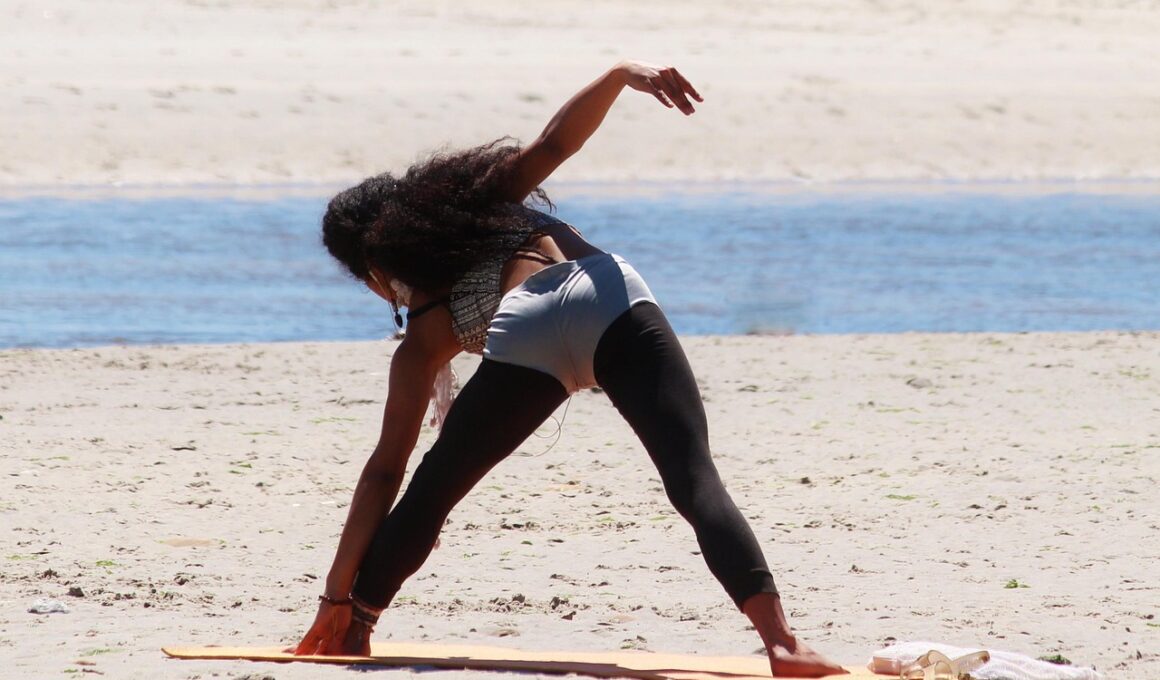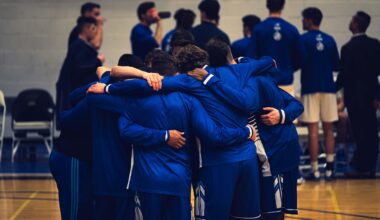Using Pilates to Enhance Plyometric Cool-down Sessions
Plyometric exercises are vigorous and demand a significant amount of muscle engagement, which can lead to fatigue and tightness post-training. Implementing cool-down techniques is critical for recovery, helping reduce soreness and improving flexibility while maintaining performance levels. Pilates offers an effective complementary approach to facilitate this process. By focusing on body awareness, breath control, and core stability, Pilates complements plyometric recovery. Engaging in Pilates after a plyometric session ensures that muscles are gently stretched and strengthened. The low-impact, controlled movements of Pilates cultivate flexibility, enabling the body to recover more efficiently following high-intensity activity. Moreover, Pilates emphasizes proper alignment and posture, which is key in preventing injury during subsequent workouts. Incorporating a few specific Pilates exercises post-plyometrics, such as the *Saw* and *Spine Stretch*, allows athletes to focus on lengthening their muscles. This lengthening helps return the muscle fibers to their optimal state for recovery. Practicing these techniques consistently contributes to long-term benefits in performance and injury prevention. Additionally, Pilates encourages relaxation, which is crucial for mental recovery post-intense workouts.
A critical aspect of integrating Pilates into plyometric cool-down sessions is establishing a structured routine. A structured session can greatly enhance the effectiveness of the cool-down phase. Start by dedicating 5 to 10 minutes for calming breath exercises. These exercises promote relaxation and lower heart rates after strenuous activity. Breathing exercises like *Pilates Breathing* allow the athlete to reconnect with their body. Following breath work, participants can transition into gentle dynamic movements aimed at releasing tension. Exercises such as *Leg Circles* or *Shoulder Bridge* can be beneficial. These movements improve blood flow and mobilize stiff joints. Furthermore, integrating fluid movement patterns retains the warmth in muscle tissue, fostering a more effective release of lactic acid. After 10 to 15 minutes of this blend of breath and movement, athletes can engage in focused stretching. This includes utilizing Pilates principles to stretch major muscle groups worked during plyometric training. Incorporating flexible stretching routines ensures elongation of muscle fibers and aids in recovery over time. Combining these various facets of Pilates ensures a comprehensive and well-rounded cool-down strategy.
Benefits of Pilates for Plyometric Recovery
Integrating Pilates into plyometric cool-down sessions offers numerous benefits that can significantly enhance athletic performance. One key advantage is improved flexibility. Plyometrics create explosive movements that can lead to muscle tightness, and through targeted stretches in Pilates, athletes can counteract this tightening. This newfound range of motion enables athletes to perform at their peak in future plyometric activities. Pilates also strengthens the core muscles, crucially supporting the spine while executing plyometric moves. A robust core contributes to better absorption of shock during landings, reducing injury risk. Additionally, focusing on core strength can amplify performance through improved power output during jumps and sprints. The controlled movements characteristic of Pilates fine-tune coordination and balance, which are essential qualities in plyometric training. Enhanced proprioception gained from Pilates helps athletes land accurately and efficiently, facilitating successful transfer to explosive activities. Furthermore, increased body awareness leads to refined movement patterns over time. Lastly, the mental focus developed in Pilates benefits psychological aspects of sports, promoting calmness and resilience during high-pressure situations in competition.
Pilates emphasizes breathing and mindfulness, making it a beneficial practice for emotional recovery after intense workouts. Attention to breath aids in calming muscles while lowering stress levels. Breathing techniques that accompany Pilates can serve as a transition from the high-energy state of plyometrics to a more restorative phase. Fostering a mind-body connection through Pilates allows athletes to visualize their recovery journey, enhancing overall well-being. Additionally, the repetitive nature of Pilates movements builds a sense of rhythm and consistency. Establishing this rhythm can help athletes transition smoothly from rigorous exercise to relaxation. The rhythmic flow of Pilates serves to unify the body and mind, providing a holistic recovery experience. For athletes who face mental fatigue stemming from rigorous plyometric routines, Pilates becomes an essential element for rejuvenation and mental clarity. Moreover, consistent practice leads to confidence-building, reinforcing the belief in one’s physical capabilities. By integrating meditation principles in Pilates, practitioners can further enhance their focus and performance, ultimately ensuring they are mentally prepared for subsequent challenges. A strong mental state can lead to optimal performance in future plyometric workouts.
Implementing Pilates in Cool-down Routines
Implementing Pilates into cool-down routines following plyometric workouts requires strategic planning. The first step is to create a tailored routine that aligns with the individual’s specific needs and goals. Athletes should begin with gentle movements to re-establish muscle control and awareness. Modifying common Pilates exercises for a fatigued state ensures that the body can engage without stress. Exercises like the *Mermaid* for lateral flexion or *Cat-Cow* for spinal articulation promote mobility. It’s important to move slowly, allowing the body to adjust as muscles release tension. This gradual approach aids recovery and enhances muscle memory for future performance. Personalizing the routine based on comfort levels and feedback from the body facilitates efficiencies in recovery. After the initial gentle movements, athletes can proceed to more intensive stretches. Incorporating targeted sessions focusing on specific muscle groups helps prevent injuries associated with overuse or fatigue. Finally, proper hydration and nutrition must accompany these cool-down practices. Refueling the body post-exercise maintains energy levels and optimizes recovery, ensuring that athletes remain ready for their next training session.
Another vital consideration when integrating Pilates into plyometric cool-down routines is maintaining mindfulness. Incorporating mindfulness practices encourages the focus on both physical sensations and mental states during recovery. Allowing moments of stillness within Pilates sessions facilitates deeper awareness of muscle tension. As such, athletes can consciously release tight areas while breathing deeply. This mindfulness encourages athletes to tune in to their bodies, fostering responsiveness to signs of fatigue or discomfort. Furthermore, fostering a mindful environment, free from distractions, enhances the overall quality of the recovery session. Dedicated spaces enable athletes to concentrate fully on their movements, promoting relaxation. Music and ambient sounds can enhance this atmosphere, aiding in the release of tension. Therefore, creating an experience that feels personal and immersive is essential. Athletes should also consider using guided Pilates sessions, whether in-person classes or online platforms. These professionally designed sessions bring structure and encouragement, enhancing the overall experience of recovery. Together, mindfulness and guided practices establish the ideal foundation for optimal plyometric cool-down routines, ensuring greater performance efficiencies in the long run.
Conclusion on Pilates and Plyometric Recovery
In conclusion, integrating Pilates into plyometric cool-down sessions presents diverse benefits crucial for athletic performance and recovery. From enhanced flexibility and core stability to mental clarity, Pilates offers a comprehensive approach to refining post-workout routines. Athletes can utilize controlled and focused movements that engage multiple muscle groups, significantly contributing to recovery outcomes. Furthermore, the mindfulness component of Pilates encourages athletes to resonate with their body’s needs for optimal recovery. This relationship reinforces the importance of listening to one’s body, which leads to injury prevention and performance optimization. By strategically implementing Pilates into cool-down sessions, individuals can also develop greater body awareness, crucial in executing effective plyometric strategies. With consistent practice, athletes will witness gradual improvements in overall strength, agility, and endurance. These attributes ultimately translate to enhanced performance in plyometric routines and sports. As a result, expanding the cool-down routine with Pilates principles will ensure that athletes have the necessary resources to recover effectively. Overall, Pilates serves as an exceptional complement to plyometrics, establishing a foundation of recovery that enables athletes to achieve their goals.
As you can see, Pilates is not just a physical practice; it is a comprehensive tool fostering holistic recovery. The collaborative nature of Pilates and plyometry emphasizes the interconnectedness of physical fitness, recovery, and mental fortitude. Incorporating this methodology encourages growth not only within athletic capabilities but also personal wellness. Therefore, establishing a Pilates-enhanced plyometric cool-down routine allows athletes to find balance in their training while providing structure in post-workout recovery sessions. This symbiotic relationship enhances athleticism as well as psychological resilience, establishing a pathway to long-term success in a range of physical pursuits.


